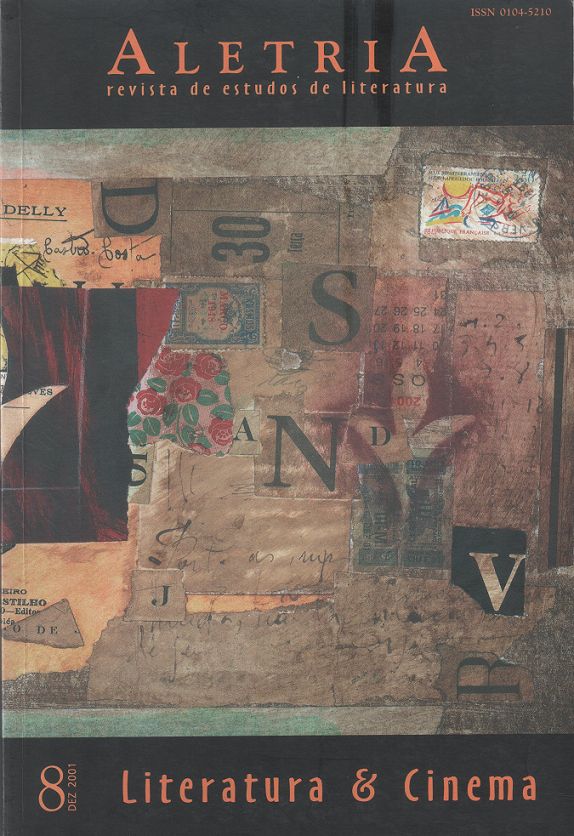Julio Bressane, Peter Greenaway e Haroldo de Campos
DOI:
https://doi.org/10.17851/2317-2096.8..53-59Keywords:
St. Jerome, creative translation, poetry, contemporary cinema.Abstract
Resumo: São Jerônimo teve que reinventar o latim para traduzir a Bíblia diretamente da língua hebraica, causando efeitos de estranhamento em seus contemporâneos e inaugurando uma nova concepção da arte de traduzir. No cinema contemporâneo, pelo menos dois cineastas trouxeram à tela a figura do santo tradutor: Julio Bressane, em São Jerônimo, e Peter Greenaway, em O livro de cabeceira. No caso deste, a evocação de Jerônimo entrelaça-se obliquamente, através do protagonista Jerome, à de um tradutor importante para a poesia de língua inglesa do século XX: Arthur Waley, o primeiro a traduzir para o inglês o clássico japonês O livro de cabeceira, de Sei Shonagon. No Brasil, Haroldo de Campos marca a confluência dessas duas vertentes: a da tradução criativa da poesia oriental e a da reescrita – na trilha aberta por São Jerônimo – de fragmentos da Bíblia a partir do original hebraico.
Palavras-chave: São Jerônimo; tradução criativa; cinema contemporâneo.
Abstract: St. Jerome had to re-invent Latin in order to translate the Bible directly from Hebrew. In doing so, he created a new conception of the art of translation. In the contemporary cinema, at least two filmmakers brought to the screen the figure of the saint-translator: Julio Bressane, in São Jerônimo, and Peter Greenaway, in The pillow book. In the case of the latter, the evocation of St. Jerome is obliquely interwoven, through the protagonist Jerome, with a prominent British translator, Arthur Waley, who was the first to translate into English the Japanese classic The pillow book by Sei Shonagon. In Brazil, Haroldo de Campos represents the convergence of these two approaches to translation: the “transcreation” of Oriental poetry and the re-writing of the Bible from the Hebrew, as St. Jerome did.
Keywords: St. Jerome; creative translation; poetry; contemporary cinema.
References
ARNS, Paulo Evaristo. A técnica do livro segundo São Jerônimo. Rio de Janeiro: Imago, 1993.
BRESSANE, Julio. Cinemancia. Rio de Janeiro: Imago, 2000.
CAMPOS, Haroldo de. Transluciferação mefistofáustica. In: Deus e o diabo no Fausto de Goethe. São Paulo: Perspectiva, 1981.
CAMPOS, Haroldo de. Bere’shith – A cena da origem. São Paulo: Perspectiva, 1993.
CAMPOS, Haroldo de. Qohélet / O-que-sabe. São Paulo: Perspectiva, 1990.
GREENAWAY, Peter. The pillow book. Paris: Disvoir, 1996.
GREENAWAY, Peter; CIMENT, Michel. Une femme émancipée comme beaucoup de mes héroïnes – entretien. Positif, Paris, n. 431, p.80-85, jan. 1997.
HOPPE, J. Leslie. St Jerome: the perils of a Bible translator. St Anthony Messanger — virtual. Disponível em: http://www.americancatholic.org/Messenger/Sep1997/feature2.asp.
LARBAUD, Valéry. Sob a invocação de São Jerônimo. Trad. Joana Angélica. São Paulo: Mandarim, 2001.
PAZ, Octavio. Al paso. México: Seix Barral, 1992.
PAZ, Octavio. Sor Juana Inés de la Cruz o las trampas de la fe. México: Fondo de Cultura Económica, 1985.
ST JEROME. Letters. Christian Classics Ethereal Library — electronic version, 1996. Disponível em: http://www.newadvent.org/fathers/3001.htm.
Downloads
Published
Issue
Section
License
Copyright (c) 2001 Maria Esther Maciel (Autor)

This work is licensed under a Creative Commons Attribution 4.0 International License.
Authors who publish with this journal agree to the following terms:Authors retain copyright and grant the journal right of first publication with the work simultaneously licensed under a Creative Commons Attribution Non-Commercial No Derivatives License that allows others to share the work with an acknowledgement of the work's authorship and initial publication in this journal.Authors are able to enter into separate, additional contractual arrangements for the non-exclusive distribution of the journal's published version of the work (e.g., post it to an institutional repository or publish it in a book), with an acknowledgement of its initial publication in this journal.Authors are permitted and encouraged to post their work online (e.g., in institutional repositories or on their website) prior to and during the submission process, as it can lead to productive exchanges, as well as earlier and greater citation of published work (See The Effect of Open Access).





